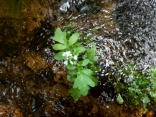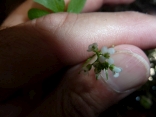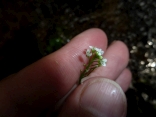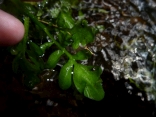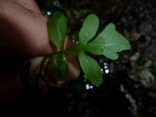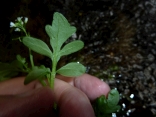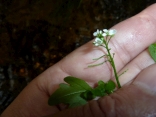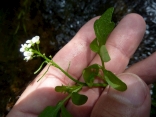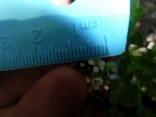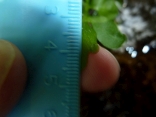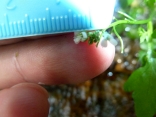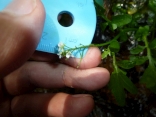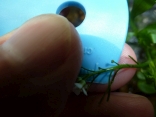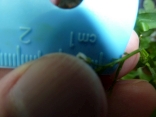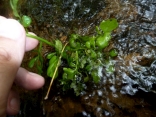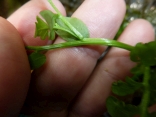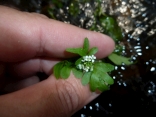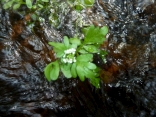|
April 15, 2012
|
Southeastern, New Hampshire
|
This plant was growing in a 30-foot wide, 6-inch to 2-feet deep stream. Some of the
plants were partially above the water and some were in the middle of the steam several
inches below the water. It looked like watercress. After futile attempts to confirm
identification, I sent a couple of pictures to Arthur Haines and he suggested that
it looks like Pennsylvania Bittercress, but he couldn't be certain from the two pictures
I sent.
Pennsylvania Bittercress is not bitter, but it is a fantastic green that can be eaten
raw or cooked. When eaten raw it has a nice, horseradish-like taste. After cooking,
it becomes much more mild. I picked a bunch to eat and enjoy.
I will need to do more work to confirm identification. I have narrowed it down to one
of the following:
- Pennsylvania Bittercress (Cardamine pensylvanica)
- Pink Cuckoo Bittercress (Cardamine pratensis var. palustris) -- From a drawing
I have seen, the palustris variation has leaflets similar to this plant.
- One-Row Watercress (Nasturtium microphyllum)
- Two-Row Watercress (Nasturtium officinale)
- Great Yellowcress (Rorippa amphibia)
The reason I am somewhat wary of the Pennsylvania Bittercress identification is that I
am unsure if it is often completely submerged underwater as this one was. On the other
hand, the Nasturtium species I listed usually have leaflets with petioles. This
plant does not one leaflets with petioles.
|
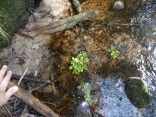
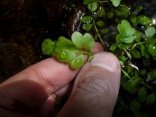
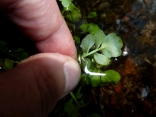
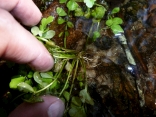
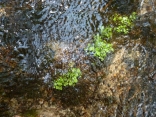
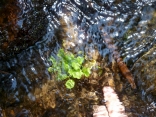
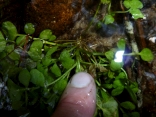
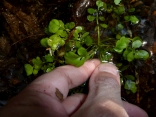
|








